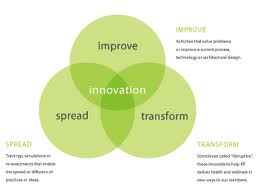Built to Last
Visionary Companies
“Visionary companies are premier institutions… in their industries, widely admired by their peers and having a long track record of making a significant impact on the world around them. The key point is that a visionary company is an organization“, not an individual or product.
Despite facing setbacks and mistakes, “visionary companies display a remarkable resiliency, an ability to bounce back from adversity. As a result, visionary companies attain extraordinary long-term performance.”
Twelve Shattered Myths
- Myth 1: It takes a great idea to start a great company.“Few of the visionary companies began life with a great idea. In fact, some began life without any specific idea and a few even began with outright failures.”
- Myth 2: Visionary companies require great and charismatic visionary leaders.“A charismatic visionary leader is absolutely not required for a visionary company… They concentrated more on architecting an enduring institution than on being a great individual leader.”
- Myth 3: The most successful companies exist first and foremost to maximize profits.“Visionary companies pursue a cluster of objectives, of which making money is only one—and not necessarily the primary one. …They’re equally guided by a core ideology.”
- Myth 4: Visionary companies share a common subset of “correct” core values.“There is no ‘right’ set of core values for being a visionary company. … The crucial variable is not the content of a company’s ideology, but how deeply it believes its ideology.”
- Myth 5: The only constant is change.“A visionary company almost religiously preserves its core ideology. … [However, they] display a powerful drive for progress that enables them to change and adapt without compromising their cherished core ideals.”
- Myth 6: Blue-chip companies play it safe.“Visionary companies may appear straitlaced and conservative to outsiders, but they’re not afraid to make bold commitments to ‘Big Hairy Audacious Goals’ (BHAGs).”
- Myth 7: Visionary companies are great places to work, for everyone.“Only those who ‘fit’ extremely well with the core ideology and demanding standards of a visionary company will find it a great place to work.”
- Myth 8: Highly successful companies make their best moves by brilliant and complex strategic planning.“Visionary companies make some of their best moves by experimentation, trial and error, opportunism, and—quite literally—accident.”
- Myth 9: Companies should hire outside CEOs to stimulate fundamental change.“Home-grown management rules at the visionary companies to a far greater degree than at comparison companies.”
- Myth 10: The most successful companies focus primarily on beating the competition.“Visionary companies focus primarily on beating themselves.”
- Myth 11: You can’t have your cake and eat it too.“Visionary companies do not [believe in the] purely rational view that says you can have either A OR B, but not both. …They embrace the… paradoxical view that allows them to pursue both A AND B at the same time.”
- Myth 12: Companies become visionary primarily through “vision statements.”“Creating a statement can be a helpful step… but it is only one of thousands of steps in a never-ending process.”
Clock Building, Not Time Telling
“Having a great idea or being a charismatic visionary leader is ‘time telling’; building a company that can prosper far beyond the presence of any single leader and through multiple product life cycles is ‘clock building’.”
- The Myth of the “Great Idea”
- “Few of the visionary companies in our study can trace their roots to a great idea or fabulous initial product.” Some began “with outright failures.”
- Waiting for “The Great Idea” Might Be a Bad Idea
- If you want to start “a visionary company but have not yet taken the plunge because you don’t have a ‘great idea,’ we encourage you to lift from your shoulders the burden of the great-idea myth.”
- The Company Itself is the Ultimate Creation
- “Never, never, never give up. But what to persist with? Their answer: The company. Be prepared to kill, revise, or evolve an idea… but never give up on the company.”
- The Myth of the Great and Charismatic Leader
- “A high-profile, charismatic style is absolutely not required… Perhaps the continuity of superb individuals atop visionary companies stems from the companies being outstanding organizations, not the other way around.”
- An Architectural Approach: Clock Builders at Work
- “The evidence suggests to us that the key people at formative stages of the visionary companies had a stronger organizational orientation than in the comparison companies, regardless of their personal leadership style.”
- This article is taken from this site: http://bizthoughts.mikelee.org/book-summary-built-to-last.html
Related articles
- This Leadership Myth Deserves To Be Busted (swrightboucher.wordpress.com)
- The Utterly Visionary Quality of Love (shambhala.com)
- Why you should avoid charismatic leaders (cbsnews.com)
- Vision/Visionary (artenthusias.wordpress.com)
- Interview: Malcolm Bricklin, The founder and CEO of Visionary Vehicles (motortrend.com)
- The Visionary vs. The Architect (notyethuman.com)
- the utterly visionary quality of love (justdharmaquotes.wordpress.com)
- Being a visionary is a sucker’s bet | PandoDaily (pandodaily.com)
- You: Visionary Thinking: Common Characteristics of Visionaries | (serve4impact.com)

Pingback: 6 Common Tech Myths That Cost You Money | Tim Batchelder.com